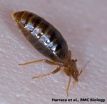(Press-News.org) Scientists at the Johns Hopkins Kimmel Cancer Center have identified two genes whose mutations appear to be linked to ovarian clear cell carcinoma, one of the most aggressive forms of ovarian cancer. Clear cell carcinoma is generally resistant to standard therapy.
In an article published online in the September 8 issue of Science Express, the researchers report that they found an average of 20 mutated genes per each ovarian clear cell cancer studied. Two of the genes were more commonly mutated among the samples: ARID1A, a gene whose product normally suppresses tumors; and PPP2R1A, an oncogene that, when altered, helps turn normal cells into tumor cells. ARID1A mutations were identified in more than half of tumors studied, and, according to Siân Jones, Ph.D., research associate at the Johns Hopkins Kimmel Cancer Center, "this gene may play a significant role in this type of cancer."
The researchers say that ARID1A and PPP2R1A had not previously been linked to ovarian cancer, and "they may provide opportunities for developing new biomarkers and therapies that target those genes," says Nickolas Papadopoulos, Ph.D., an associate professor of oncology and director of Translational Genetics at the Ludwig Center for Cancer Genetics & Therapeutics at the Johns Hopkins Kimmel Cancer Center.
For the study, the scientists evaluated mutations in 18,000 protein-encoding genes in ovarian clear cell tumors from eight patients at Johns Hopkins and from institutions in Taiwan and Japan. They purified the cancer cells, and analyzed genes from those cells and from normal cells obtained from the blood or uninvolved tissues of the same patients.
Researchers identified 268 mutations in 253 genes among the eight tumors, with an average of 20 mutations per tumor.
Next, they determined the amino acid makeup, or sequences, of four genes with the most prevalent mutations, including ARID1A, in the tumor and normal tissues of an additional 34 ovarian clear cell cancer patients. Altogether, ARID1A mutations were identified in 57 percent of the 42 tumors. PPP2R1A mutations were found in 7.1 percent of the tumors.
The landscape of cancer-related genes can be likened to a few "mountains" (highly prevalent mutations) among many "hills" (genes with less prevalence), says Papadopoulos, and "ARID1A is one of the biggest mountains found in recent years."
The protein encoded by ARID1A is a component of a cellular structure called a chromatin remodeling complex. Chromatin compresses DNA to make it fit inside cells and shields it from any other chemical signals, providing a means for controlling how and when the DNA is read. When chromatin gets remodeled, the components are shuffled and certain areas of DNA become exposed, allowing genes to be switched on or off. When the ARID1A gene is mutated, the chromatin remodeling complex is altered, allowing genes to be incorrectly switched on or off.
The Johns Hopkins scientists say mutated ARID1A can now be linked to so-called "epigenetic" changes – alterations to DNA occurring outside of the genome, in this case, the chromatin. "The mutations in ARID1A provide an important new link between genetic and epigenetic mechanisms in human cancer and may help identify epigenetic changes which can be targeted with therapies," says Victor Velculescu, M.D., Ph.D., associate professor of oncology at the Johns Hopkins Kimmel Cancer Center.
The researchers next plan to search for genes whose chromatin is specifically affected by ARID1A inactivation.
Ovarian clear cell carcinoma accounts for about 10 percent of cancers that start in the cells on the surface of the ovaries. It mainly affects women ages 40 to 80 and is resistant to chemotherapy.
INFORMATION:
Funding for this study was provided by the Dr. Miriam and Sheldon G. Adelson Medical Research Foundation, the AACR Stand Up to Cancer-Dream Team Translational Cancer Research Grant, the Virginia and D.K. Ludwig Fund for Cancer Research, the Department of Defense, and the National Institutes of Health.
Additional study authors include: Tian-Li Wang, Ie-Ming Shih, Richard Roden, Luis A. Jr. Diaz, Bert Vogelstein and Kenneth Kinzler of Johns Hopkins; Tsui-Lien Mao of the National Taiwan University College of Medicine in Taipei; Kentaro Nakayama of Shimane University in Izumo, Japan; and Ruth Glas and Dennis Slamon of the David Geffen School of Medicine at the University of California-Los Angeles.
On the Web:
www.sciencemag.org
www.hopkinskimmelcancercenter.org
Researchers identify genes tied to deadliest ovarian cancers
2010-09-09
ELSE PRESS RELEASES FROM THIS DATE:
Study identifies critical 'traffic engineer' of the nervous system
2010-09-09
Athens, GA—A new University of Georgia study published in the journal Nature has identified a critical enzyme that keeps traffic flowing in the right direction in the nervous system, and the finding could eventually lead to new treatments for conditions such as Alzheimer's and Parkinson's disease.
"There was no medical or any other applied science drive for this project; it was purely curiosity about how transport inside cells works," said study co-author Jacek Gaertig, professor in the cellular biology department in the UGA Franklin College of Arts and Sciences. "But ...
Novel sensing mechanism discovered in dendritic cells to increase immune response to HIV
2010-09-09
New York, NY (September 8, 2010) – Dendritic cells are the grand sentinels of the immune system, standing guard 24/7 to detect foreign invaders such as viruses and bacteria, and bring news of the invasion to other immune cells to marshal an attack. These sentinels, however, nearly always fail to respond adequately to HIV, the virus causing AIDS. Now a team of scientists at NYU Langone Medical Center has discovered a sensor in dendritic cells that recognizes HIV, spurring a more potent immune response by the sentinels to the virus. They report their findings in the September ...
House-sharing with microbes
2010-09-09
Household dust contains up to 1000 different species of microbes, with tens of millions of individual bacterial cells in each gram. And these are just the ones that can be grown in the lab!
Dr Helena Rintala, speaking at the Society for General Microbiology's autumn meeting in Nottingham describes how we share our living and working spaces with millions of microbes, not all of whom are bad news.
Microbes are a part of our normal environment and can be both beneficial and detrimental to our health. "Exposure to microbes in childhood can prevent the development of allergies. ...
Yeast holds clues to Parkinson's disease
2010-09-09
Yeast could be a powerful ally in the discovery of new therapeutic drugs to treat Parkinson's disease says a scientist presenting his work at the Society for General Microbiology's autumn meeting in Nottingham today.
Dr Tiago Fleming Outeiro from the Instituto de Medicina Molecular in Lisbon, Portugal describes how his group is slowly uncovering the molecular basis of Parkinson's disease by studying the associated human protein in yeast cells.
Parkinson's disease is a neurodegenerative disorder without any known cure that affects around 6 million people worldwide. The ...
Why chromosomes never tie their shoelaces
2010-09-09
In the latest issue of the journal Nature, Miguel Godinho Ferreira, Principal Investigator at the Instituto Gulbenkian de Ciência (IGC) in Portugal, lead a team of researchers to shed light on a paradox that has puzzled biologists since the discovery of telomeres, the protective tips of chromosomes: while broken chromosome ends generated by DNA damage (such as radiation or cigarette smoke) are quickly joined together, telomeres are never tied to each other, thus allowing for the correct segregation of the genetic material into all cells in our body. Since telomeres erode ...
Anti-aphrodisiac protects young bedbugs
2010-09-09
Male bedbugs are known to be very unfussy when it comes to mating, mounting any well-fed bug they can see - regardless of age or gender. Researchers writing in the open access journal BMC Biology have discovered how immature bedbug nymphs, who would be harmed by the traumatic insemination technique practiced by the males, release alarm pheromones to deter this unwanted attention.
Vincent Harraca, from Lund University, Sweden, worked with a team of researchers to stage encounters between males and females or nymphs. He said, "The chemical communication, as well as the ...
Scots Pine shows its continental roots
2010-09-09
By studying similarities in the genes of Scots Pine trees, scientists have shown that the iconic pine forests of Highland Scotland still carry the traces of the ancestors that colonised Britain after the end of the last Ice Age, harbouring genetic variation that could help regenerate future populations, according to new results published in the journal Heredity.
The research was carried out by an international team from the Centre for Ecology & Hydrology, the Polish Academy of Sciences, the University of Edinburgh and the Macaulay Land Use Research Institute.
Today's ...
Study adds new clue to how last ice age ended
2010-09-09
As the last ice age was ending, about 13,000 years ago, a final blast of cold hit Europe, and for a thousand years or more, it felt like the ice age had returned. But oddly, despite bitter cold winters in the north, Antarctica was heating up. For the two decades since ice core records revealed that Europe was cooling at the same time Antarctica was warming over this thousand-year period, scientists have looked for an explanation.
A new study in Nature brings them a step closer by establishing that New Zealand was also warming, indicating that the deep freeze up north, ...
Investigating better endpoints for immunotherapy trials
2010-09-09
Cancer immunotherapy calls for revised clinical endpoints that differ from those used for chemotherapy, according to an article published online September 8 in The Journal of the National Cancer Institute.
Unlike chemotherapy, which acts directly on tumors, cancer immunotherapies exert their effects on the immune system, which may delay or change response patterns, perhaps owing to the dynamics of the immune system itself. For example, initial tumor burden may increase due to lymphocytic infiltration, because of T-cell proliferation, which is followed by lymphocyte-induced ...
Researchers identify potential new drug for neurodegenerative disease
2010-09-09
BOSTON, Mass. (September 8, 2010)‹Scientists have discovered a small
molecule that helps human cells get rid of the misfolded, disfigured
proteins implicated in Alzheimer¹s disease and other neurodegenerative
ailments. This potential drug could have applications for other conditions
as well.
Cells create and discard proteins continuously, a process that relies on a
balance between the speed with which new proteins are created and damaged
ones destroyed. Protein destruction occurs through a sophisticated system
that marks proteins for disposal by tagging them with ...





